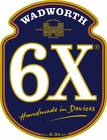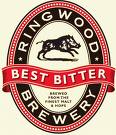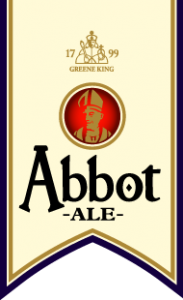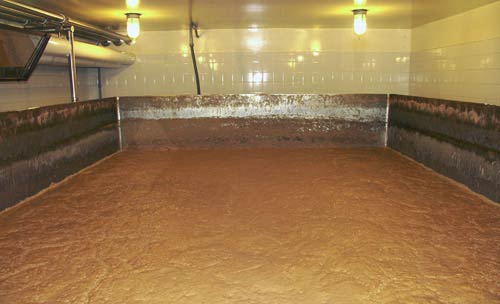Top 10 Brews of 2009
 I am not much into lists but it seems to be the rage around this time of year. I thought I would compile my list of favorite brews/recipes we brewed over the last 12 months as rated by myself, my family and friends. Despite ranking I would recommend all of the following recipes, so lets get to it.
I am not much into lists but it seems to be the rage around this time of year. I thought I would compile my list of favorite brews/recipes we brewed over the last 12 months as rated by myself, my family and friends. Despite ranking I would recommend all of the following recipes, so lets get to it.
#10 Pale Ale Kit from OakBarrel.com – This was one of my families favorites, a full bodied, full flavored Pale Ale, uses American yeast and hops and produces a very smooth ale that improves with age. I have made 2 batches over the last 18 months.
#9 Nut Brown Ale from OakBarrel.com – This was a favorite of the wife, an American style Nut Brown, really smoothed out with age, full bodied with a great nutty malty taste.
#8 London ESB from NorthernBrewer.com – This would have been higher but I some issues with the ESB yeast during the summer, it is a little fussy when the heat spikes. We had builders coming in and out of the cellar all summer which really messed with the climate. Once I finally got the brew right it produced one of my favorite keg beers of the year. Its a strong ale that drinks like a session brew, be careful with this one as it creeps up on you.
#7 Peat Smoked Porter from NorthernBrewer.com – A rich porter I brewed twice this year. You can really taste the peat in the smoked barley, adding some single malt whisky notes to the finish. A very smooth, incredibly rich drink with strong coffee and chocolate flavour, makes a great after dinner drink. Could have been higher but it really is very rich and not something you may want on a regular basis.
#6 Kentish Best Bitter from BritishBrewer.com – This was the Christmas brew in the house and very popular gift with friends and family. My parents liked the fresh medium-bodied, real ale like mouthfeel that left them wanting a second glass. It is light, well balanced ale made from a single hop variety. I personally loved the colour, its the brightness, clearest ale I have ever made. Its a beautiful, crystal clear light copper/red. I did not place it higher as the recipe still needs work.
#5 Dry Irish Stout from NorthernBrewer.com – I may never need to create a Guinness recipe clone while we have this Northern Brewer kit available. It is a very refreshing stout, clean, dry and goes down really smooth with all the coffee flavours of the original. I serve this chilled with a stout tap and BeerGas in the keg. One of my favorite stout recipes ever and one of the most popular brews I’m commissioned to make for parties and events.
#4 English IPA from NorthernBrewer.com – This is a big ale from Northern Brewer. A full bodied IPA, not as spicy as its American cousins. Its a refreshing, fruit laden beverage with a hoppy aroma. The malt comes through with age leading to a full-bodied ale that pairs nicely with a spicy curry in the late night hour.
#3 Sinistral Warrior IPA from NorthernBrewer.com – I have my second batch of the year bottle conditioning as we speak and I hope to crack a bottle on my birthday. This is an ale in the tradition of DogFish Head 60min IPA, a little overly hopped, peppery with a bright rich golden colour. Its a potent brew that goes down a little too easily.
#2 Spitfire Ale from the Clone Brews book – I brewed this for my dad earlier this year and it quickly became a family favorite. A clone of the classic from Shepherd Neame Brewery in Kent. Its hard to describe, both an explosion of fruit and roast malt mixed up with a caramel butterscotch aroma that is both refreshing and smooth. You want more, a lot more. It did not last long but nothing does when the family is over visiting (Happy New Year Dad). I have this recipe waiting on deck early in 2010 and will provide a full write-up for the blog.
…and the number one brew of the year is!!!!
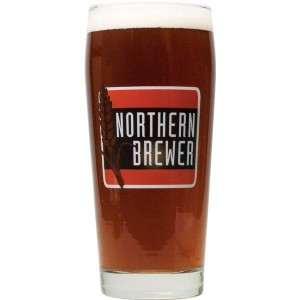 #1 New Old Ale from NorthernBrewer.com – It is very rare when everyone, and I mean everyone, loves the same ale. This was my most popular seller this Christmas, consumed at many a Christmas party, the overall family favorite, and my own personal fav of the year. It is a complex dark brown ale that needs to be aged and has an ABV nearing a barleywine. I had this one conditioning in the bottle for over 2 months before consuming. The addition of Jamaican brown sugar leads to a rum flavour at the finish to complement the full-bodied, rich toffee-like malt, balanced out by the sweet Galena hops. The colour is a beautiful deep brown red that looks glorious in a glass. This is an ale equally as comfortable in a brandy snifter as a pint glass. The history of Old Ale is also something quintessentially British, it seems even more appropriate to be the first winner of the British Brewer Brew of the Year (and will be the topic of a future post).
#1 New Old Ale from NorthernBrewer.com – It is very rare when everyone, and I mean everyone, loves the same ale. This was my most popular seller this Christmas, consumed at many a Christmas party, the overall family favorite, and my own personal fav of the year. It is a complex dark brown ale that needs to be aged and has an ABV nearing a barleywine. I had this one conditioning in the bottle for over 2 months before consuming. The addition of Jamaican brown sugar leads to a rum flavour at the finish to complement the full-bodied, rich toffee-like malt, balanced out by the sweet Galena hops. The colour is a beautiful deep brown red that looks glorious in a glass. This is an ale equally as comfortable in a brandy snifter as a pint glass. The history of Old Ale is also something quintessentially British, it seems even more appropriate to be the first winner of the British Brewer Brew of the Year (and will be the topic of a future post).
Happy New Year one and all. I have many resolutions and dreams for the upcoming year. I want to get a job, mainly to fund dreams two and three namely produce my first all-grain brew and perfect a recipe for Fullers London Pride and serve it from an Oak Cask in my own house.
Thanks for reading this blog, I would welcome your own lists in the comments for favorite brews both homebrew and commercial. Raise a glass to the 2000’s and welcome the new decade.

